When designing a container garden for shade, it’s natural for plants like begonias, fuchsias and impatiens to top the list. Don’t get me wrong, these plants are fantastic and are a great way to add color to a design. However, ferns can be just as eye-catching and are especially useful for providing structure, color and dramatic impact. Here’s a list of fabulous ferns sure to liven up your next shade-container design.
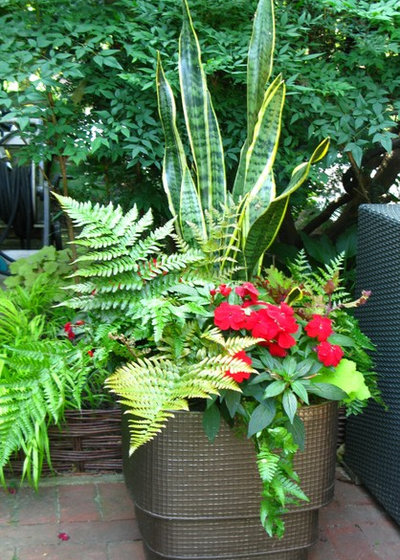
Livable Landscapes Inc
Autumn fern (
Dryopteris erythrosora,
USDA zones 6 to 9; find your zone) is an evergreen fern with bronze-colored new growth. Its arching habit adds a graceful, soft look to containers. Team it with bold textured plants, such as mother-in-law’s tongue (
Sansevieria trifasciata), seen in this image, or hostas, for added contrast and drama.
It grows to 2 feet tall and wide, requires occasional watering once established and prefers light to deep shade. Its deer resistance is a bonus.
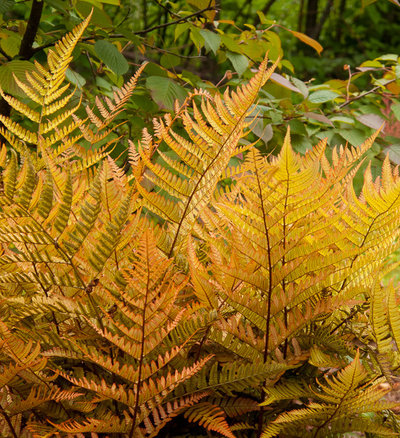
Le jardinet
For an even more dramatic burst of color, try
‘Brilliance’ autumn fern (
Dryopteris erythrosora ‘Brilliance’). The new growth emerges a striking coppery orange color that holds through spring. Team it with plants that have flowers in the warm color spectrum (yellow, orange and red), and you’ll have a hot container for the shade.
See how to grow autumn fern
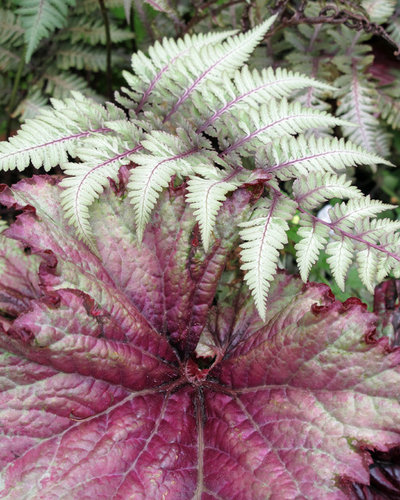
Susan Cohan, APLD
It you’re looking for color but prefer cool tones, you can’t go wrong with
Japanese painted fern (
Athyrium niponicum var.
pictum,
zones 5 to 9). Its purple stems laced with silvery green add a wow factor. Try teaming it with bold purple or burgundy begonias or heucheras.
Japanese painted fern grows to about 1½ feet by 1½ feet and prefers light shade. This fern is also deer-resistant.
See how to grow Japanese painted fern
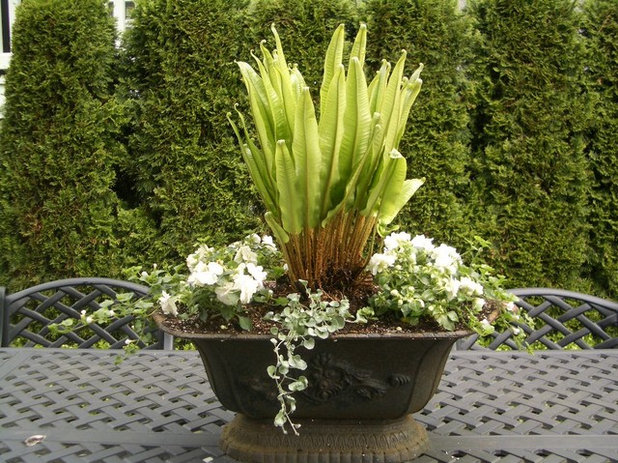
Glenna Partridge Garden Design
Hart’s tongue fern (
Asplenium scolopendrium,
zones 6 to 8) doesn’t exactly look like a fern. Its wide, strappy fronds unfurl vertically, giving the appearance of an upward-facing tongue. It can be used as the main “thriller” plant, as seen here, or as a filler, taking the place of a plant with a grass-like texture.
This evergreen fern grows to about 1½ feet by 1½ feet and prefers regular water and partial to deep shade.
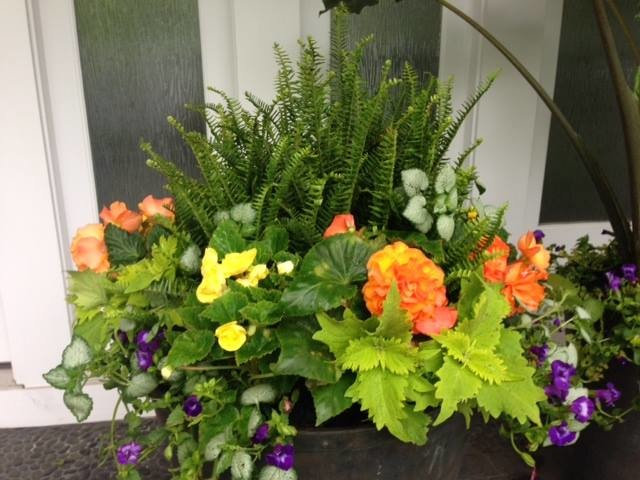
Landscapes by sharon
Western sword fern (
Polystichum munitum,
zones 3 to 10), with its dense, upward-arching fronds, acts as a great central plant in a design. Its bright kelly-green hue provides the perfect foil for any color scheme. Plant it with a mixture of draping plants of varying textures and colors for a quick and easy design.
Western sword fern is considered evergreen; however, to keep it looking fresh, cut back the old fronds just before the new fronds emerge in early spring. These ferns also do well if transplanted in the garden when it’s time to switch your container arrangement. It grows to about 3 feet tall and wide. Its versatility makes it a favorite, as it grows happily in sun and shade and moist to dry conditions.
See how to grow western sword fern
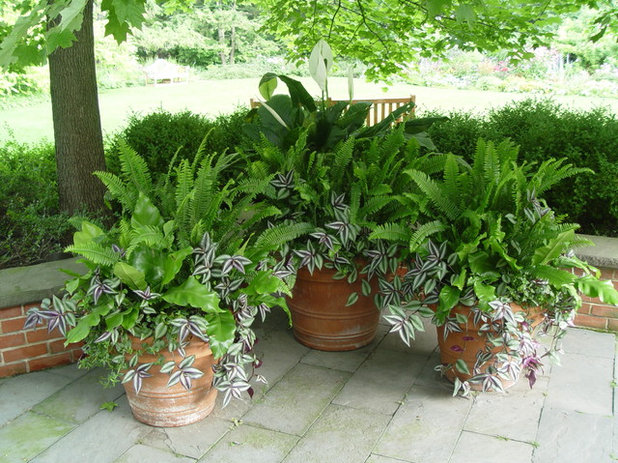
Schmechtig Landscapes
Boston fern (
Nephrolepis exaltata,
zones 10 to 12)
is your good old common house fern. However, it makes a beautiful outdoor container plant when temperatures stay above 40 degrees Fahrenheit. In the Northern Hemisphere, this usually means it can handle living outdoors from about late May through mid-October. Its evergreen fronds stay lush and tropical-looking all season.
It grows to about 2½ feet by 2½ feet and prefers moist but well-drained soil. Like sword fern, it goes with any color scheme. As a bonus, rabbits don’t find it appealing.
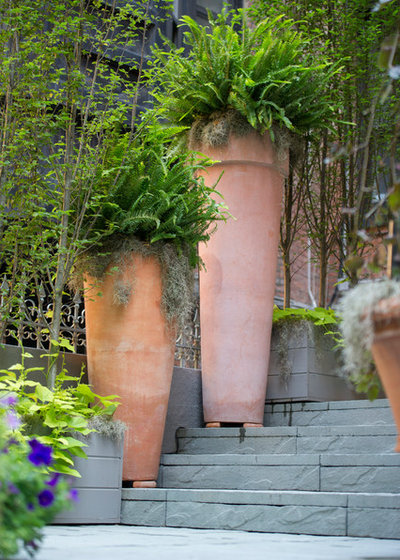
Janice Parker Landscape Architects
For a simple but equally dramatic look, try
Boston fern
alone in a container.
Here, tall terra-cotta pots are topped with tufts of Boston fern.
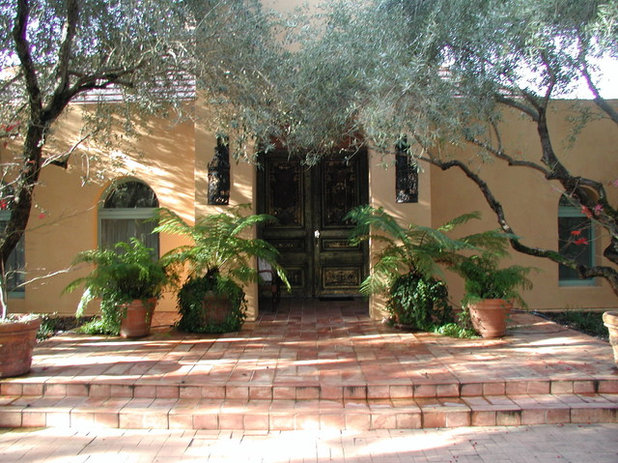
Lou Penning Landscapes Inc.
If using a single plant in a pot is more your style, another great fern to try is
New Zealand tree fern (
Dicksonia squarrosa). New Zealand tree ferns are bold and dramatic just due to their size. They have a slender brown trunk that can reach up to 20 feet tall in the wild (much shorter in a container), topped with fronds that grow horizontally as long as 4 to 6 feet.
It does best in full shade to partial shade and sheltered from wind. It prefers moist but well-drained soil. It’s not considered fully cold-hardy but can handle temperatures as low as 25 degrees Fahrenheit.
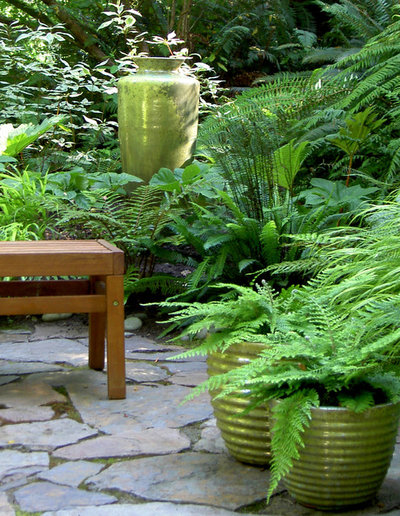
Bliss Garden Design
Soft shield fern (
Polystichum setiferum, zones 5 to 9) looks especially good planted in a woodland setting. Its shiny evergreen fronds grow horizontally, with a graceful lacy texture. Planting soft shield fern in a pot on the edge of a garden creates a nice transition from a more structured or formal portion of the garden to a wilder area.
It grows to 2 to 3 feet tall and wide and prefers full shade and moist but well-drained soil.
Your turn: There are so many fantastic ferns to choose from when designing a shade container garden. We would love to hear about some of your favorites in the Comments.





